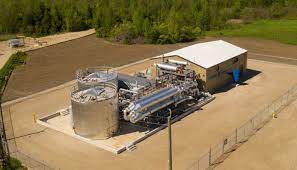
Breaking News
 Liminality: Truthstream Media's Lost History Film | Coming Fourth of July 2026
Liminality: Truthstream Media's Lost History Film | Coming Fourth of July 2026
 This Man Just Explained LA Riots PERFECTLY
This Man Just Explained LA Riots PERFECTLY
Top Tech News
 NVIDIA just announced the T5000 robot brain microprocessor that can power TERMINATORS
NVIDIA just announced the T5000 robot brain microprocessor that can power TERMINATORS
 Two-story family home was 3D-printed in just 18 hours
Two-story family home was 3D-printed in just 18 hours
 This Hypersonic Space Plane Will Fly From London to N.Y.C. in an Hour
This Hypersonic Space Plane Will Fly From London to N.Y.C. in an Hour
 Magnetic Fields Reshape the Movement of Sound Waves in a Stunning Discovery
Magnetic Fields Reshape the Movement of Sound Waves in a Stunning Discovery
 There are studies that have shown that there is a peptide that can completely regenerate nerves
There are studies that have shown that there is a peptide that can completely regenerate nerves
 Swedish startup unveils Starlink alternative - that Musk can't switch off
Swedish startup unveils Starlink alternative - that Musk can't switch off
 Video Games At 30,000 Feet? Starlink's Airline Rollout Is Making It Reality
Video Games At 30,000 Feet? Starlink's Airline Rollout Is Making It Reality
 Automating Pregnancy through Robot Surrogates
Automating Pregnancy through Robot Surrogates
 Grok 4 Vending Machine Win, Stealth Grok 4 coding Leading to Possible AGI with Grok 5
Grok 4 Vending Machine Win, Stealth Grok 4 coding Leading to Possible AGI with Grok 5
World's largest compressed air grid "batteries" will store up to 10GWh

As the world shifts towards renewable energy, grid-scale storage is becoming ever more crucial. Getting carbon emissions to net-zero will require a patchwork of technologies to smooth out unpredictable and inconvenient generation curves, with pumped hydro, huge lithium-ion batteries, tanks full of molten salt or silicon, thermal bricks, or heavy blocks stacked up in towers or suspended in mineshafts all in the mix.
Pumped hydro accounts for around 95 percent of the world's grid energy storage and gigwatt-capacity plants have been in operation since the 1980s. The problem is that you need a specific type of location and a staggering amount of concrete to build a pumped hydro plant, which works against the goal of reaching net zero. Rotting vegetation trapped in dams also contributes to greenhouse gas emissions. Meanwhile, the biggest mega-batteries built so far are only in the 200 MW/MWh range, though installations bigger than 1 GW are planned.

 Law n' Order
Law n' Order EMP and EMF-Free Vehicles
EMP and EMF-Free Vehicles HERE COMES THE MOTHERSHIP
HERE COMES THE MOTHERSHIP

